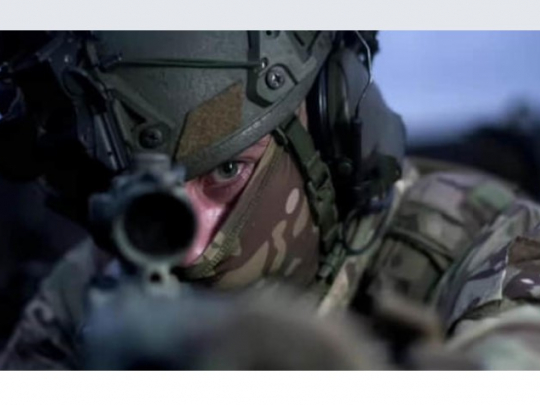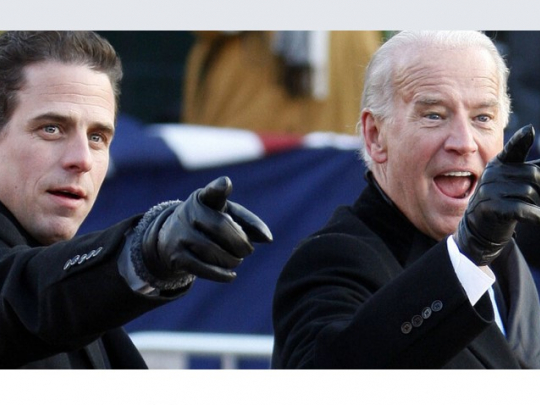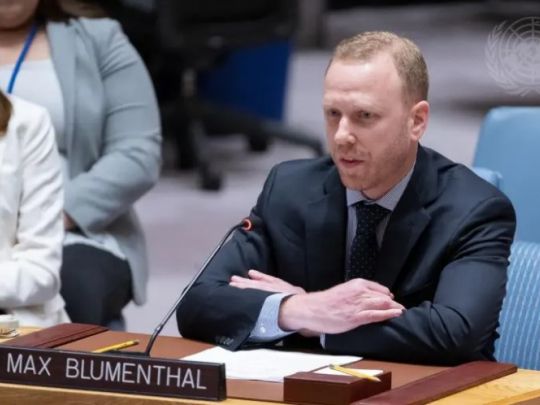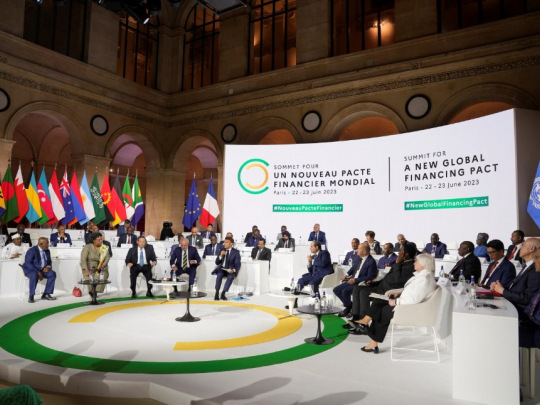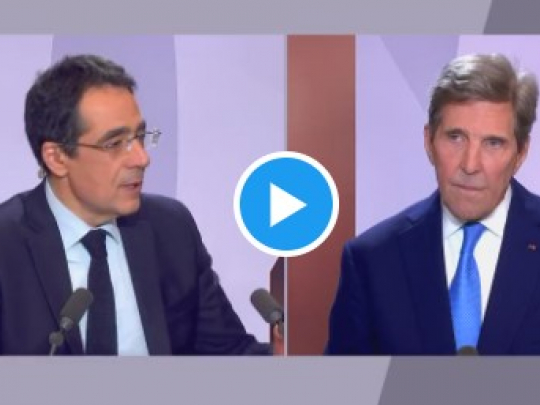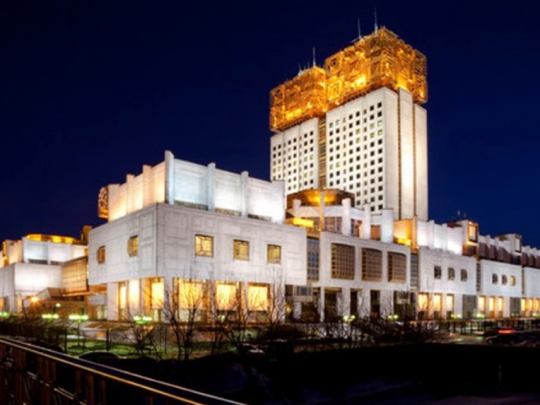Russia wants to force the US to respect the UN Charter
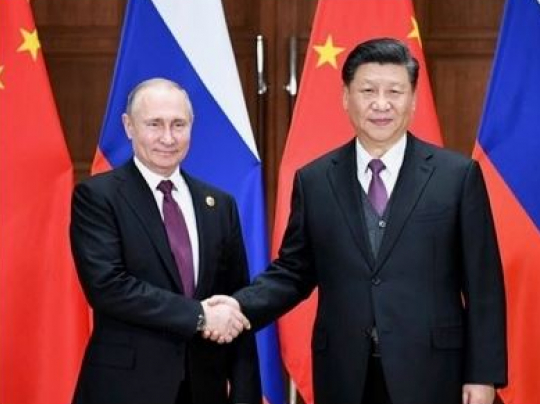
The world today is ruled by the United States of America and NATO, which present themselves as the only global powers, while the Russian Federation and the People’s Republic of China are more powerful than them, both economically and militarily.
On December 17, 2021, Moscow released a draft bilateral treaty with Washington providing guarantees for peace [1], as well as a draft agreement to implement it [2]. These documents are not directed against the United States, they are only aimed at enforcing the UN Charter and complying with its own commitments.
On December 23, at President Putin’s annual press conference, a question from Sky News journalist Diana Magnay led to a spat. Vladimir Putin curtly replied that Russia’s remarks on US behaviour dated back to 1990 and that Washington not only ignored them, but persisted in going ahead. Now Nato weapons were about to be deployed in Ukraine, which would be an unacceptable fact for Moscow [3]. Never before has a Russian leader expressed himself in this way. It is important to understand that placing missiles four minutes’ flight from Moscow poses an extreme threat and is a cause for war.
On 30 December, a telephone conversation was held between Presidents Biden and Putin. The US side put forward proposals for resolving the Ukrainian issue, while the Russian side brought the discussion back to the US violations of the UN Charter and of its word.
The US is considering showing its good faith by not welcoming Ukraine into Nato. This is an approach that only marginally answers the question posed and is only likely to prevent war if accompanied by withdrawal measures.
It is clear that we are entering a period of extreme confrontation that will last for several years and could degenerate into a World War at any moment.
In this article, we will examine this conflict, which is largely unknown in the West.
1- THE EXTENSION OF NATO TO THE BORDERS OF RUSSIA
During the Second World War, the United States deliberately made the maximum effort weigh on the Soviet Union. Between 22 and 27 million Soviets died (13-16% of the population) compared to 418,000 Americans (0.32% of the population). When this butchery ended, the US formed a military alliance in Western Europe, Nato, to which the USSR responded by creating the Warsaw Pact. Nato soon proved to be a federation that violated the principle of state sovereignty laid down in Article 2 of the United Nations Charter [4], which Third World countries denounced in 1955 at the Bandung Conference [5]. Ultimately, the USSR also violated the UN Charter by adopting the Brezhnev Doctrine in 1968 and imposing it on the members of the Warsaw Pact. When the USSR was dissolved and some of its former members created a new military alliance, the Collective Security Treaty, they chose to turn it into a confederation in compliance with the UN Charter.
To be clear about the meaning of federation and confederation, let us take an example: during the Civil War, the Northerners formed a federation because the decisions of their government were binding on all its member states. In contrast, the Southerners formed a confederation because each member state remained sovereign.
When the Berlin Wall and the Iron Curtain fell in 1989, the Germans wanted to reunite their nation into one country. However, this meant the extension of Nato into the territory of the German Democratic Republic. At first, the Soviets were opposed to this. A reunification with the neutralisation of GDR territory was envisaged. In the end, First Secretary Mikhail Gorbachev agreed to the expansion of Nato through the reunification of the two Germanies on the condition that the Alliance did not seek to expand to the East.
West German Chancellor Helmut Kohl, his Foreign Minister Hans-Dietrich Genscher, and French President François Mitterrand jointly supported the Russian position: NATO had to commit itself to no further expansion to the East. US President George H. Bush Sr. and his Secretary of State, James Baker, made numerous public statements and commitments to this effect to all their interlocutors [6].
As soon as the USSR was dissolved, three neutral countries joined the European Union: Austria, Finland and Sweden. However, the EU and Nato are one and the same entity, one civilian and one military, both based in Brussels. According to the Treaty on European Union as amended by the Lisbon Treaty (Article 42, paragraph 7), it is NATO that ensures the defence of the European Union whether or not its members are also members of NATO. De facto, these countries are no longer neutral since their accession to the European Union.
In 1993, the Copenhagen European Council announced that the countries of Central and Eastern Europe could join the European Union. From then on, the process of NATO membership for the former members of the Soviet bloc went smoothly, apart from the traditional Russian remarks.
But by the 1990s, Russia was a shadow of its former self. Its wealth was plundered by 90 people, the so-called ’oligarchs’. The standard of living collapsed and the life expectancy of Russians dropped by 20 years. In this context, no one listened to what Moscow was saying.
In 1997, the Nato summit in Madrid called on the former Soviet bloc countries to join the North Atlantic Treaty. After East Germany (1990), but the next five times in violation of its word, it was the Czech Republic, Hungary and Poland in 1999; then in 2004 Bulgaria, Estonia, Latvia, Lithuania, Romania, Slovakia and Slovenia; in 2009 Albania and Croatia; in 2017 Montenegro; and again in 2020 Northern Macedonia.
Ukraine and Georgia may soon join Nato, while Sweden and Finland may abandon their theoretical neutrality and openly join the Atlantic Alliance.
What was unacceptable in 1990 is still unacceptable today. It is not conceivable that Nato missiles are within a few minutes’ flight of Moscow. The same situation occurred in 1962. The United States deployed missiles on the USSR’s border in Turkey. In response, the Soviets installed missiles on the US border in Cuba. US President John Kennedy discovered in extremis the trap the Pentagon had put the US in. He managed to clarify the situation through his ambassador to the United Nations. The then Chairman of the US Joint Chiefs of Staff, General Lyman Lemnitzer, was violently anti-Soviet and intended to provoke a nuclear war. Fortunately his current successor, General Mark Milley, is much wiser and maintains courteous relations with his Russian counterparts.
2- VIOLATIONS OF THE UN CHARTER
The UN Charter was negotiated by 50 states in 1945 at the San Francisco Conference, even before Soviet troops took Berlin and caused the Nazi Reich to surrender. It was adopted unanimously. Since then, another 147 states have signed it, bringing the total number of signatories to 197.
The Russian proposal of December 17, 2021 for a bilateral US-Russia Treaty to Safeguard Peace states in Article 2 that: "The Parties shall ensure that all international organisations, military alliances and coalitions in which at least one of the Parties participates adhere to the principles contained in the Charter of the United Nations. For the reasons explained above, this implies the transformation of Nato or its dissolution.
The same proposal states in Article 4 that the former member states of the Soviet Union cannot join Nato. This implies that Estonia, Latvia and Lithuania should leave and that neither Ukraine nor Georgia should join.
Article 7 of the Russian proposal stipulates a ban on the deployment of nuclear weapons outside its borders. This implies the immediate withdrawal of atomic bombs illegally stored in, for example, Italy and Germany in violation of the 1968 Treaty on the Non-Proliferation of Nuclear Weapons.
Furthermore, respect for the UN Charter requires a return to the original functioning of the UN and the abandonment of the illegal practices that this organisation has been engaged in since the dissolution of the Soviet Union.
Insensibly, the UN is not only no longer fulfilling its statutory objectives, but is being transformed into an agency for implementing US decisions. For example, the Blue Helmets, which were once "interposition forces", have become "peacekeeping forces" since the dissolution of the USSR. They no longer simply intervene when two parties are at war and manage to conclude a cease-fire. They used to intervene between the two sides, with their explicit agreement, and ensure that their commitments were respected. Today, they do not care about the agreement of the protagonists, or even the existence of an agreement between them. In practice, during the twenty years or so of Russia’s collapse, the Security Council endorsed a US decision. In practice, therefore, the peacekeepers were mainly at the service of the Pentagon.
The most glaring example is the Libyan affair. The US organised and financed false testimony before the UN Human Rights Council in Geneva that Muamar Gaddafi was bombing his own people [7] . These depositions were then passed on to the Security Council. Washington obtained a resolution allowing Nato to intervene in order to "protect the population" of Libya from its "dictator". Once there, Nato forbade the African heads of state to come and check what was going on, threatening to kill them all. Then it bombed Libya, killing about 120,000 of the people it had supposedly come to "protect". Finally, it split the country into three and installed terrorists in power in Tripoli [8].
In the case of Syria, a further step has been taken. The UN, which had asked the Arab League to carry out an on-site investigation to verify reports of a civil war, did not ask any questions when this mission was interrupted without explanation. This was because experts from 21 Arab countries had found in a preliminary report that the US information was false [9]. The US then appointed Jeffrey Feltman, Secretary of State Hillary Clinton’s deputy for the broader Middle East, as deputy to Secretary General Ban Ki-moon, who coordinated the Allied operations in the war economically, politically and militarily [10]. Years later, while this gentleman is long gone to commit other crimes elsewhere, his directives to starve Syria are still being imposed on UN agencies [11].
This brings us to the question of UN agencies. Many of them serve as a cover for US actions. For example, in this period of the Covid-19 epidemic, everyone has noticed that member states’ contributions to this agency represent less than 20% of its budget, while donations from the Bill and Melinda Gates Foundation alone represent 10%. In fact, some of the WHO’s actions are heavily influenced by private interests. Or Russia’s Permanent Representative to the Security Council, Vitali Churkin, revealed that in 2012 the UNHCR transported hundreds of armed jihadists by boat from Libya to Turkey to form the so-called Free Syrian Army.
And that’s not all. The Security Council has passed numerous sanctions against states during the period of Russia’s erasure. Many senior UN officials are seeing on the ground that these sanctions are causing famine and killing civilians. But they have been voted on and can only be lifted by a vote that the US opposes. These so-called ’sanctions’ are not sentences passed by a court of law, but weapons against people wielded in the name of the United Nations.
Since Washington can no longer get them adopted, it unilaterally decrees them and forces the European Union, its vassal, to apply them. Thus the Europeans of the Union are murdering civilian populations, this time in the name of "democracy".
3- THE RUSSIAN-CHINESE STRATEGY
In the West, we announce what should take place in order to take credit for the event. Often we do nothing to make it happen, we wait for it and congratulate ourselves in advance. This is what is known as a "publicity effect". In Russia and China, on the other hand, where there is less talk, people only announce what they are sure to achieve. Generally speaking, announcements are revelations of what has just been done.
When President Putin announces that he is going to put the United States in its place, it is not negotiable. Russia knows that President Joe Biden cannot withdraw. It intends to force him to do so, perhaps slowly, but surely. Like a chess player, Moscow has anticipated the next moves. All it has to do is show its strength and possibly strike at the margins. For example, the Russian military could demonstrate its hypersonic missiles so that everyone can see that it can destroy any target in the world. Or it could strike the US armed forces on territory they illegally occupy.
On December 15, 2021, Moscow and Beijing staged their military alliance. This was two days before the draft treaty with the US was published. Presidents Vladimir Putin and Xi Jinping spoke in a video conference to support the Russian proposal. China has officially insisted on the legitimacy of this demand. While there are many Sino-Russian differences, and even points of conflict such as Eastern Siberia, Moscow and Beijing are bound to support each other. Both countries have been under attack from the West in the not too distant past. They have experienced the hypocrisy of these partners and know that they need each other to resist them.
In recent years, Russia has mastered new weapons. In 2014, it showed that it could neutralise the communications and controls of a US destroyer, the USS Donald Cook, equipped with an Aegis system linking it to all US missile launchers [12], and even of an aircraft carrier such as the USS Ronald Reagan [13]. Subsequently, it showed in the Levant that it could extend space where it neutralises all Nato communications and commands over a radius of 300 kilometres [14]. Currently, Russia has superiority in conventional conflicts.
The French hypersonic weapons technique, long unexploited by NATO, was perfected by the Soviets, then by the Russians [15]. Today, it is the decisive weapon capable of striking any target anywhere on Earth with nuclear weapons. A launcher passes through the atmosphere, picks up speed as it orbits the Earth, and then shoots at its target as it re-enters the atmosphere. Its speed is such that no one can intercept it. This weapon makes NATO’s "missile shield" obsolete [16]. Currently, Russia has superiority in nuclear conflicts [17].
An intermediate version of this has been provided by Moscow to Beijing and probably to Pyongyang. The Deputy Chairman of the US Joint Chiefs of Staff, Admiral Christopher Grady, has acknowledged the Russian technological lead and announced that the US is working hard to catch up. Although President Donald Trump has revived military research, it will take the Pentagon many years to do so.
The Syrian war was an opportunity for Moscow to test a huge amount of new weapons, some of which proved far superior to Western ones. At the same time, the failure of the massive F-35 programme, which has been unable to meet all its commitments, shows that US military research has broken down. This multi-role aircraft is largely sold to the Allies, but abandoned by the US Air Force, which is falling back on reissuing old F-16s.
In addition, China has developed an effective satellite destruction technique that it seems to have shared with Russia. The destruction of an old Soviet satellite on November 15, 2021, not far from the International Space Station, caused a stir within Nato. From now on, China and Russia could render all NATO armies deaf and blind in a few hours.
- Source : Thierry Meyssan - Voltaire Net




